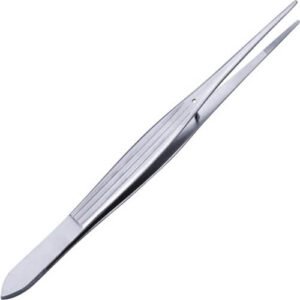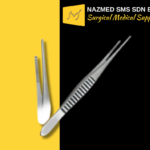Introduction:
In the intricate world of surgery, precision is not just a preference; it’s a necessity. Enter McIndoe dissecting forceps – the unsung heroes of the operating room, standing tall among the surgical instruments. These slender, yet robust forceps bear the name of the renowned British plastic surgeon, Sir Harold Gillies, Baron McIndoe. Strap in as we unravel the captivating tale of these forceps and explore the myriad ways they weave their magic in the hands of skilled surgeons. Now lets explore what are Mcindoe dissecting forceps used for: A Surgeon’s Trusty Companion by SMS Instruments.
The Genesis of McIndoe Dissecting Forceps:
To appreciate the significance of McIndoe dissecting forceps, we must first delve into their origin story. Named after the pioneer of plastic surgery, Sir Harold Gillies, these forceps were crafted with the precision and finesse demanded by the delicate art of reconstructive surgery. Born out of the crucible of innovation, they embody the spirit of surgical excellence that Gillies championed during his illustrious career.
The Anatomy of McIndoe Dissecting Forceps:
Picture this: slender, elegantly curved arms terminating in fine, pointed tips. The forceps resemble a pair of delicate chopsticks, yet beneath their unassuming appearance lies a design that allows for unparalleled precision. Crafted from high-quality stainless steel, these forceps boast a resilience that stands the test of time, making them a mainstay in surgical suites worldwide.
The Surgical Symphony:
Now, let’s step into the operating room and witness the symphony that unfolds when skilled hands wield McIndoe dissecting forceps. As a surgeon delicately grasps these forceps, a dance of dexterity and finesse ensues. From tissue dissection to meticulous suturing, the forceps serve as an extension of the surgeon’s hands, allowing for controlled movements and unparalleled accuracy.
The Art of Reconstruction:
One of the primary arenas where McIndoe dissecting forceps shine is in the realm of reconstructive surgery. Whether it’s reshaping facial features or rebuilding damaged tissue, these forceps offer surgeons the control needed to navigate the intricate landscape of the human body. In the skilled hands of a surgeon, they become instruments of transformation, restoring form and function with a precision akin to sculpting.
Beyond the Operating Room:
The influence of McIndoe dissecting forceps extends beyond the confines of the operating room. They serve as symbols of innovation and resilience, reminding us of the strides made in the field of surgery. From medical students learning the ropes to seasoned surgeons perfecting their craft, these forceps leave an indelible mark on the journey of every medical professional.
The Human Touch:
While McIndoe dissecting forceps may be inanimate objects, the stories they tell are imbued with the essence of humanity. Behind every pair of forceps lies a surgeon’s dedication, a patient’s hope, and a tale of healing. They are not merely tools; they are conduits of compassion, bridging the gap between illness and recovery.
Conclusion:
As we draw the curtain on our exploration of McIndoe dissecting forceps, we are left with a profound appreciation for the intersection of science and art that is surgery. These forceps, named in honor of a surgical luminary, continue to carve a path of precision and excellence in the hands of modern healers. So, the next time you witness the ballet of the operating room, take a moment to appreciate the silent but indispensable role played by McIndoe dissecting forceps – the trusted companions of those who navigate the delicate terrain of human healing.







